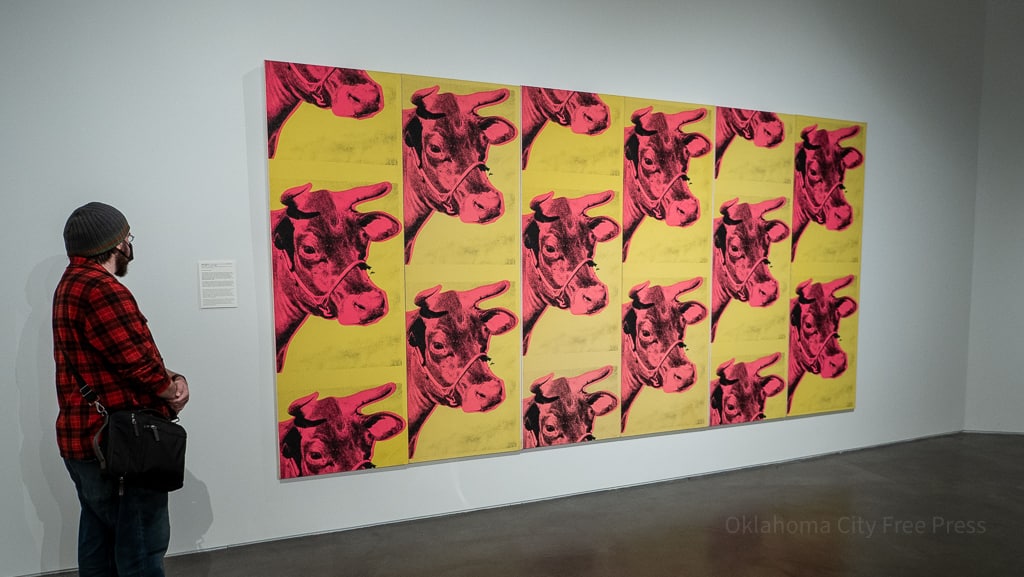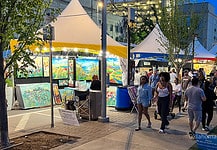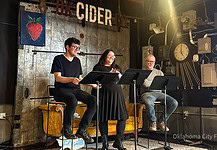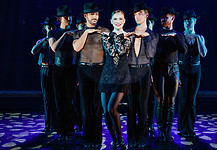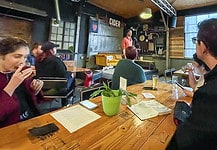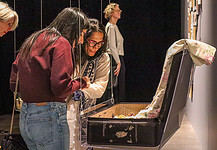Last Updated on February 5, 2023, 8:16 AM | Published: February 5, 2023
How often do we really think about food?
Sure we obsess over what to eat for dinner and read endless restaurant reviews and watch hours of cooking competition shows, but how much time do any of us spend thinking about our relationship to our food and how it factors into our society?
These are the questions at the root of “The Art of Food,” a massive new exhibition on display at Oklahoma Contemporary through May.
Bringing together works that span cultures and perspectives across the twentieth and twenty-first centuries, including some major art world names and a few remarkably rare or little-seen pieces, the exhibit explores the myriad ways in which food intersects with society, psychology, and commerce.
“Food as a subject for art is as old, probably, as art itself, because human beings need to eat,” said OK Contemporary Director Jeremiah Matthew Davis. “And so of course we’re preoccupied on a day-to-day basis with how we’re going to nourish ourselves. So it makes sense that food would become a natural subject of art, from an earlier period of time up to the present.”
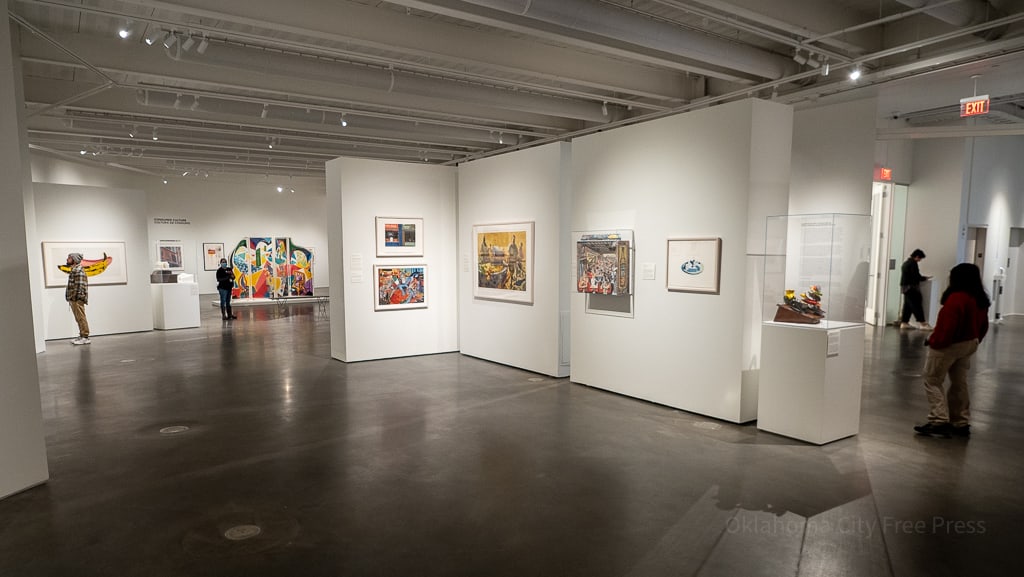
Schnitzer Collection
“The Art of Food” was originally conceived and organized by the University of Arizona, where curators were given access to the sprawling art collection of the Jordan D. Schnitzer and His Family Foundation.
From the Schnitzer Collection’s more than 20,000 works, just over 100 pieces were selected to represent not only the aesthetics and visual benchmarks of our edible world, but our relationship to food and the role it has played in our evolving society.
“Food is complex,” says Olivia Miller, Interim Director and Curator of Exhibitions at the University of Arizona Museum of Art. Miller was instrumental in compiling and organizing “The Art of Food” and serves as the Head Curator for the travelling exhibit.
“Not only is it a physical necessity, but it is also integral to our communities, relationships, cultures and memories,” Miller said in a press statement to accompany the exhibit. “It’s a commodity, it’s a livelihood and it has ethical implications. This exhibition explores all of these facets of food and prompts us to consider our own relationships with it.”
Household Names & Everyday Objects
A large portion of “The Art of Food,” and indeed a large portion of the Schnitzer Collection, is occupied by mid-20th Century “pop art” created by art-world household names such as Warhol, Lichtenstein, and Johns, and even features some majorly large works from Damien Hirst and longtime Oklahoman Ed Ruscha.
The “pop” artists have always been heavily concerned with food in their work, due in large part to the mundane, “everyday” aspect that has always fascinated purveyors of the style.
“Pop art was primarily concerned with everyday objects,” Davis told me. “So naturally gravitating toward food would make total sense, looking at the everyday things, the ‘normal’ things that are present in our lives.”
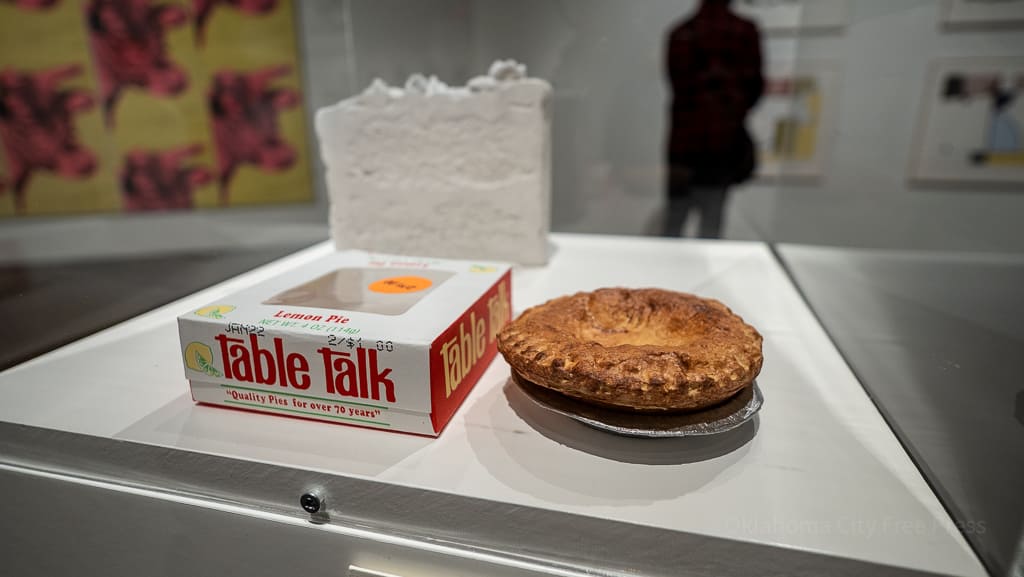
Some of those artists even took their fascination to another level, using food not only as a subject, but as a medium.
“Some of them were literally using food as the materials to make the art,” said Davis. “For Ed Ruscha in particular, he started making works from non-traditional materials in the late 60s and early 70s, and food was definitely an interest and something that he returned to time and time again.”
One collection of prints by Ruscha on display in the exhibit, entitled “News, Mews, Pews, Brews, Stews, Dues,” was made using materials such as beer, pumpkin pie filling, and vegetable juices.
Cooking, Commerce, Consciousness
In addition to considering the everyday implications of food in our lives, many works in “The Art of Food” focus on the complicated social element of food in commerce, culture, and even the darker side of America’s own economic and racial history.
Lorna Simpson’s “C-Ration” uses stark, black-and-white photography overlaid with the words “not good enough” and “but good enough to serve” as a commentary on the Black slaves forced to prepare the food for their slavemasters.
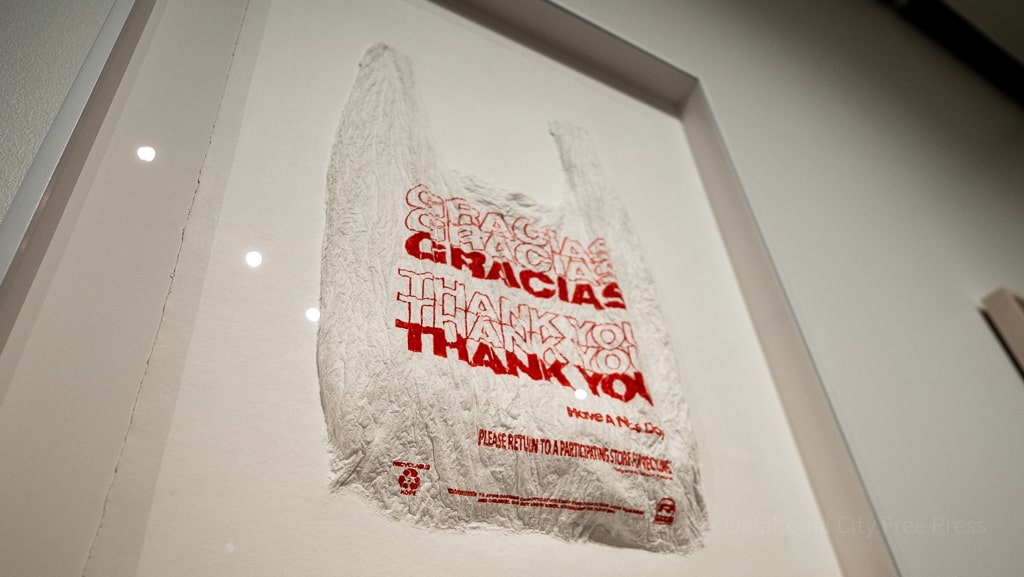
A pair of textured prints from Analia Saban depicting plastic shopping bags form a statement of the way that language is used throughout food commerce in America, as well as examining the ubiquitous plastic waste generated by the food industry.
Many works even ask audiences to be conscious of the true origins of their food, such as Warhol’s towering “Cow” prints and Lichtenstein’s continuously deconstructed “Bull Profile Series,” both confronting viewers with the living source of much of America’s food industry.
Eat Up!
When the museum holds its official opening celebration for “The Art of Food” on February 9th, they’ll be, appropriately, pairing the festivities to food and drink of all kinds.
The museum’s own Cafe Contemporary will be creating a special selection of hors d’oeuvres and cocktails to complement the artworks for the event. They will also be highlighting the Learning Gallery’s hands-on art-making activities related to the exhibit’s foodie themes, and the full slate of programs and events running throughout the exhibit’s stay, such as the family-friendly “Edible Canvas” event on April 8th where kids will be encouraged to play with their food.
“The beautiful thing about the works in ‘The Art of Food’ is, because we all have a relationship with food, we all bring our own knowledge and expertise into the gallery,” Davis said. “So we can all engage with the works and interpret them through our own lens of understanding about food and about the world.”
“The Art of Food: From the Collections of Jordan D. Schnitzer and His Family Foundation” at Oklahoma Contemporary is open now through May 22nd.
The exhibit’s opening celebration will take place February 9th in a ticketed, 21-and-over evening event. Tickets and more information are available at oklahomacontemporary.org.
Museum admission during regular hours is free.
Brett Fieldcamp has been covering arts, entertainment, news, housing, and culture in Oklahoma for nearly 15 years, writing for several local and state publications. He’s also a musician and songwriter and holds a certification as Specialist of Spirits from The Society of Wine Educators.
